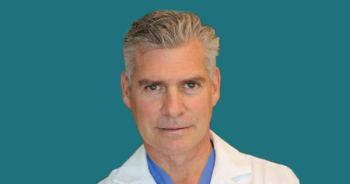
Ocular Gene Therapy RGX-314 Expands Efficacy to Diabetic Retinopathy
REGENXBIO previously announced positive data in patients with wet AMD who were treated with the same gene therapy.
RGX-314, an investigational gene therapy from REGENXBIO, is well-tolerated and shows promising efficacy in the treatment of
Suprachoroidal delivery of RGX-314 was well-tolerated in the 15 patients dosed in cohort 1 with no treatment-related serious adverse events (TRAEs) and no intraocular inflammation. Initial efficacy data demonstrated that 33% of patients in cohort 1 had at least a step improvement at 3 months post-treatment from baseline on ETDRS-DRSS compared with 0% of controls, with 1 patient experiencing a 4-step improvement.
"We are pleased to share initial data from the Phase II ALTITUDE trial, and we are encouraged to see treatment effect particularly at this early time point of three months after the one-time, in-office administration of RGX-314," said Steve Pakola, MD, chief medical officer, REGENXBIO, in a statement.1 "RGX-314 is the first gene therapy in clinical trials for DR using suprachoroidal delivery, and has the potential to provide sustainable, long-term anti-VEGF protein production in the eye for the treatment of DR, which affects approximately eight million people in the United States alone. We look forward to providing additional updates on this trial next year."
The randomized, multi-center, open-label, dose-escalation ALTITUDE trial is evaluating RGX-314's efficacy and safety, as well as the method of suprachoroidal delivery via the SCS Microinjector. Participants enrolled in the trial have moderate-to-severe nonproliferative diabetic retinopathy (NPDR) or mild proliferative diabetic retinopathy (PDR).
WATCH NOW:
In the 7 patients with NPDR at baseline, 3 (43%) experienced at least a 2-step improvement at 3 months post-treatment. In the 8 patients with PDR at baseline, 2 patients (25%) experienced at least a 2-step improvement at 3 months post-treatment.
Cohort 1 consists of 20 patients randomized at a 3:1 ratio to receive 2.5x1011 GC/eye of RGX-314 or control. Cohorts 2 and 3 are still enrolling 20 participants each to be treated at a dose level of 5x1011 GC/eye although cohort 3 is enrolling patients who are neutralizing antibody (NAb) positive. No participants in the trial receive prophylactic immune suppressive corticosteroid therapy.
"DR can start in young adulthood and often progresses quickly, leading to vision-threatening complications, including diabetic macular edema (DME) and neovascularization that can lead to vision loss," Marcus added.1 "Current treatment options include 'watchful waiting,' treatment requiring repeated anti-VEGF injections, retinal laser or surgical treatment. This first look at the ALTITUDE trial data is promising, as it shows not only clinical improvement in disease severity as measured by the ETDRS-DRSS, but also that this treatment is well tolerated in patients."
The treatment has been well-tolerated in the 15 participants dosed so far. One serious AE did occur but was deemed unrelated to treatment. No intraocular inflammation was observed. There was 1 case of mild case of episcleritis that resolved with topical corticosteroid treatment. The most common TRAEs were conjunctival hemorrhage and conjunctival hyperemia, cases of which were mostly mild and not considered related to the gene therapy.
Earlier this month, REGENXBIO
The treatment was well-tolerated in this indication with no serious AEs related to treatment and similar transient TRAEs as in the ALTITUDE trial. In terms of efficacy, improvements were seen in mean best-corrected visual acuity and central retinal thickness in treated patients compared to placebo.
"We are pleased to share initial data from the Phase II AAVIATE trial, and we are encouraged by the emerging clinical profile of RGX-314 for the treatment of wet AMD using suprachoroidal delivery, a delivery mechanism which we believe could provide access to gene therapy treatment in all settings of patient care," Pakola said in an earlier statement.2 "The observed stability of visual acuity and retinal thickness in the backdrop of reduced anti-VEGF injections is encouraging at this first dose level. We look forward to further enhancing our understanding of the potential of RGX-314 when delivered to the suprachoroidal space, as we continue to evaluate two higher dose levels in this trial."
REFERENCES
1. REGENXBIO presents positive initial data from phase II ALTITUDE™ trial of RGX-314 for the treatment of diabetic retinopathy using suprachoroidal delivery at American Society of Retina Specialists Annual Meeting. News release. REGENXBIO. October 9, 2021. http://ir.regenxbio.com/news-releases/news-release-details/regenxbio-presents-positive-initial-data-phase-ii-altitudetm
2. REGENXBIO presents positive initial data from phase II AAVIATE® trial of RGX-314 for the treatment of Wet AMD using suprachoroidal delivery and provides trial update at Retina Society 54th Annual Scientific Meeting. News release. October 1, 2021. https://www.prnewswire.com/news-releases/regenxbio-presents-positive-initial-data-from-phase-ii-aaviate-trial-of-rgx-314-for-the-treatment-of-wet-amd-using-suprachoroidal-delivery-and-provides-trial-update-at-retina-society-54th-annual-scientific-meeting-301390016.html
Newsletter
Stay at the forefront of cutting-edge science with CGT—your direct line to expert insights, breakthrough data, and real-time coverage of the latest advancements in cell and gene therapy.












































